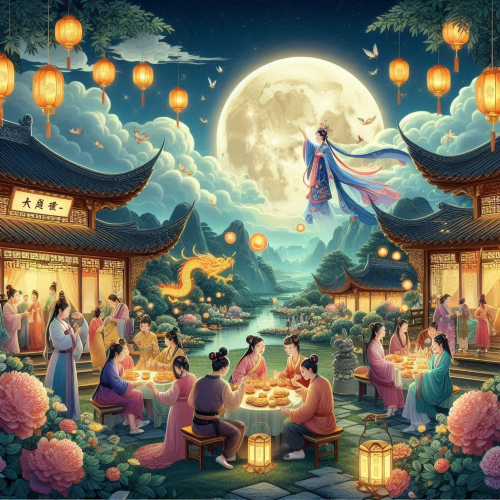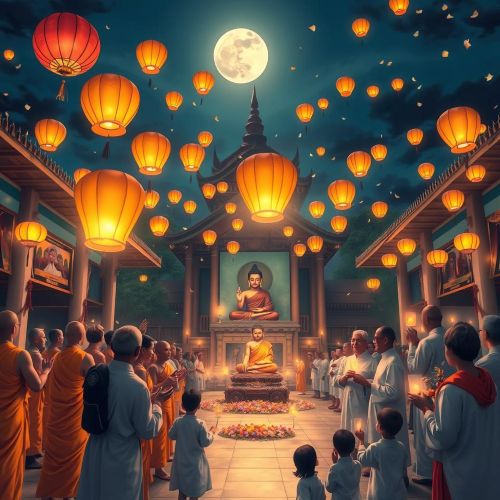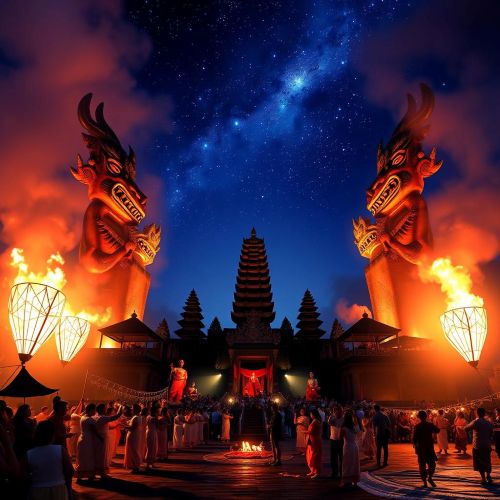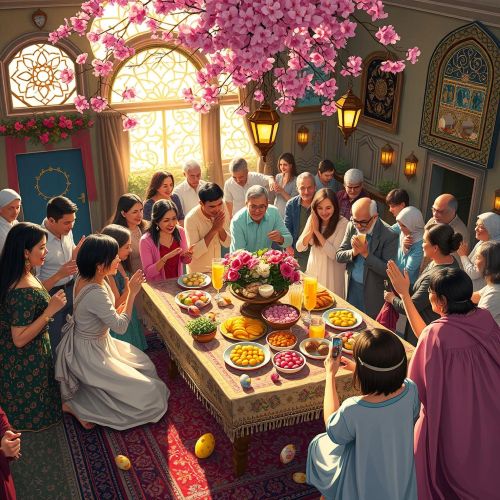Chuseok : Korean Thanksgiving Day
At a glance
| Description | |
|---|---|
| Location | All over the country |
| Country | South Korea |
| Dedicated To | Ancestors |
| Duration | 3 days |
| Time of Year | October |
Introduction
Chuseok, often known as Korean Thanksgiving Day, is one of the most important and widely celebrated holidays in Korea. Falling on the 15th day of the eighth month of the lunar calendar, it coincides with the harvest moon and symbolizes abundance, familial gratitude, and spiritual reflection. Historically rooted in Korea’s agrarian society, Chuseok is more than just a harvest festival—it is a deeply symbolic time that blends ancient mythology, communal rituals, and modern cultural practices. Its enduring relevance makes it a vital thread in the fabric of Korean identity.
Connection with Mythology
The mythological significance of Chuseok adds a spiritual and symbolic depth to the holiday. One of the most well-known stories tied to the festival is the tale of the Moon Rabbit, or “daltokki,” a figure believed to live on the moon, tirelessly pounding rice cakes. According to Korean folklore, the rabbit was rewarded with a place on the moon after a selfless act of sacrifice witnessed by the Heavenly Emperor. This story has long been associated with Chuseok because of the rabbit’s link to rice cakes and the moon, both central symbols of the holiday. The tale represents ideals like generosity, virtue, and harmony—values that align with the spirit of Chuseok.
Other ancient records link the festival to Gabae, a month-long weaving contest mentioned during the Silla Dynasty. According to the “Samguk Sagi,” this early form of celebration involved communal effort and culminated in a feast. The legacy of this custom continues in modern Chuseok’s emphasis on group participation, whether through rituals or meal preparation.
The festival is also influenced by shamanistic and Confucian practices, especially those concerning ancestor worship. The alignment of Chuseok with the full moon is not accidental—it mirrors the lunar calendar’s significance in determining the most auspicious time for spiritual and agricultural rituals. The full moon’s roundness symbolizes unity and completeness, echoing the familial togetherness Chuseok encourages.
Main Activities
Celebrated over three days, Chuseok is a time for families to come together, honor their ancestors, and share in the rewards of the year’s harvest. Central to these celebrations is charye, a memorial rite performed at home in front of a table filled with seasonal foods. These offerings express respect and gratitude to the ancestors for their blessings and protection throughout the year. The display is arranged with great care, and the ritual is conducted with solemnity, connecting the living to their heritage.
Another integral tradition is seongmyo, where families travel to their ancestral burial grounds. This act of cleaning graves and paying respects is more than maintenance—it is a spiritual reunion across generations. Families bring the same foods prepared for charye and offer them at the gravesite, often accompanied by bows and ritualistic pouring of rice wine as a symbolic toast to the deceased.
Food preparation, especially the making of songpyeon, plays a major role in the celebrations. These half-moon-shaped rice cakes are filled with ingredients like sesame seeds, sweet beans, and chestnuts, each flavor representing different hopes for prosperity. The process of making songpyeon is a family activity, and the belief that crafting beautiful rice cakes will bring good fortune encourages both children and adults to take part. Steamed over pine needles, songpyeon carry not only taste but also the aroma of nature, further deepening their symbolic value.
Beyond rituals and food, Chuseok is a time for enjoyment through traditional games and cultural performances. Families engage in folk games such as yut nori, a board game involving stick throws, or jegichagi, a form of Korean hacky sack. Neolttwigi, or seesaw jumping, and ganggangsullae, a full moon circle dance performed by women, are also traditional parts of the celebration. These activities foster unity, cooperation, and joy, reinforcing the festival’s communal spirit.
Importance in Cultural History
Chuseok’s roots stretch back over two millennia to Korea’s early agricultural society, when communities depended on bountiful harvests for survival. As farming played a central role in daily life, festivals like Chuseok served as both celebrations of success and acts of reverence to the divine and ancestral spirits. The act of sharing freshly harvested food was more than sustenance—it was a symbolic act of gratitude and unity.
During the Joseon Dynasty, Chuseok became further formalized within the framework of Confucian rituals. Despite initial hesitations by Neo-Confucian scholars about its shamanistic undertones, Chuseok was ultimately accepted as a key ritual day honoring family and tradition. This acceptance solidified its status as one of the most important holidays, alongside Lunar New Year.
Chuseok also held symbolic power during moments of national strife. Under Japanese occupation, Koreans clung to traditional holidays like Chuseok as acts of cultural resistance, using them to affirm national identity. Even today, the holiday retains a sense of dignity and rootedness, especially in a fast-modernizing society.
In contemporary Korea, while lifestyles have evolved and urbanization has changed how people gather, Chuseok continues to serve as a yearly anchor for tradition. Even when celebrated in city apartments rather than countryside homes, the values of gratitude, respect, and remembrance remain strong. The continued observance of ancestral rites and traditional foods reflects a profound respect for heritage and identity.
International Appeal
As Korean culture reaches global audiences, thanks in part to the Korean Wave or Hallyu, interest in traditional holidays like Chuseok is growing around the world. Korean communities abroad often host public Chuseok events featuring performances, food fairs, and workshops to share their culture with non-Korean neighbors. These events not only celebrate the festival but also offer opportunities for intercultural understanding and exchange.
Universities in Korea with large international student populations frequently hold special Chuseok programs, allowing students from around the world to learn about and experience Korean traditions firsthand. These events create memorable cultural touchpoints and promote cross-cultural friendships.
The imagery of Chuseok, particularly the Moon Rabbit, has become a recognizable symbol beyond Korea. Similar legends appear in Chinese and Japanese folklore, revealing a pan-Asian fascination with moon symbolism and stories of sacrifice and immortality. This shared mythology highlights common cultural threads across the region, deepening appreciation for the festival’s themes.
Modern expressions of Chuseok have also made their way into Korean pop culture. Television shows, films, and music videos often depict holiday scenes involving family gatherings and traditional rituals. This exposure helps global audiences engage with Korean traditions in a relatable and visually rich format.
As more people engage with Korean content, there’s growing curiosity about the traditions that underpin these cultural expressions. From trying out recipes for songpyeon to participating in digital Chuseok greetings, the festival is steadily becoming an international cultural moment, one that emphasizes gratitude, family, and harmony across borders.
Source
Kim, H. (2010). Korean Seasonal Customs: Chuseok and Other Traditional Holidays. Seoul: Jimoondang Publishing.
Lee, P. H. (1997). Sourcebook of Korean Civilization: Volume Two. Columbia University Press.
National Folk Museum of Korea. (2021). Chuseok: Korean Thanksgiving Day. Retrieved from https://www.nfm.go.kr
Yoon, H. (2015). “The Mythological Roots of Korean Festivals.” Journal of Korean Studies, 20(1), 45–67.
Frequently Asked Questions
Lorem ipsum dolor sit amet, consectetur adipiscing?
Lorem ipsum dolor sit amet, consectetur adipiscing elit. Praesent convallis vestibulum justo, ac tincidunt nunc vehicula quis. Nullam id dolor quis orci malesuada feugiat. Curabitur aliquet libero at urna ullamcorper, ac ultricies nulla dapibus.
Lorem ipsum dolor sit amet, consectetur adipiscing?
Lorem ipsum dolor sit amet, consectetur adipiscing elit. Praesent convallis vestibulum justo, ac tincidunt nunc vehicula quis. Nullam id dolor quis orci malesuada feugiat. Curabitur aliquet libero at urna ullamcorper, ac ultricies nulla dapibus.
Lorem ipsum dolor sit amet, consectetur adipiscing?
Lorem ipsum dolor sit amet, consectetur adipiscing elit. Praesent convallis vestibulum justo, ac tincidunt nunc vehicula quis. Nullam id dolor quis orci malesuada feugiat. Curabitur aliquet libero at urna ullamcorper, ac ultricies nulla dapibus.
Lorem ipsum dolor sit amet, consectetur adipiscing?
Lorem ipsum dolor sit amet, consectetur adipiscing elit. Praesent convallis vestibulum justo, ac tincidunt nunc vehicula quis. Nullam id dolor quis orci malesuada feugiat. Curabitur aliquet libero at urna ullamcorper, ac ultricies nulla dapibus.
Lorem ipsum dolor sit amet, consectetur adipiscing?
Lorem ipsum dolor sit amet, consectetur adipiscing elit. Praesent convallis vestibulum justo, ac tincidunt nunc vehicula quis. Nullam id dolor quis orci malesuada feugiat. Curabitur aliquet libero at urna ullamcorper, ac ultricies nulla dapibus.









